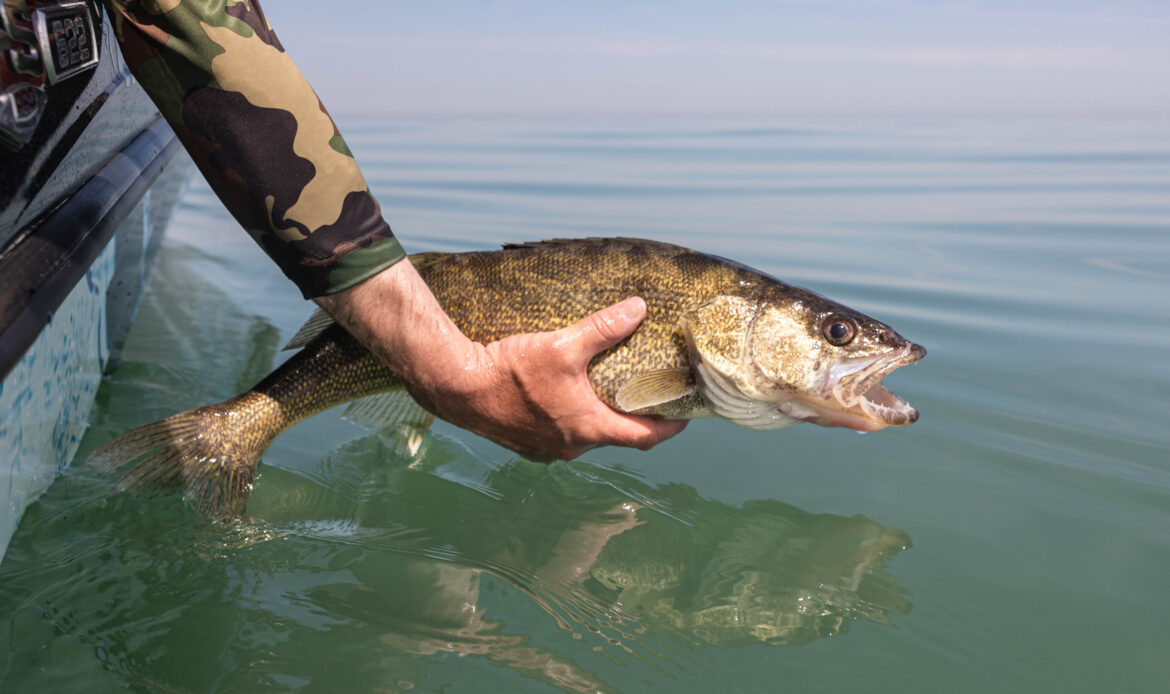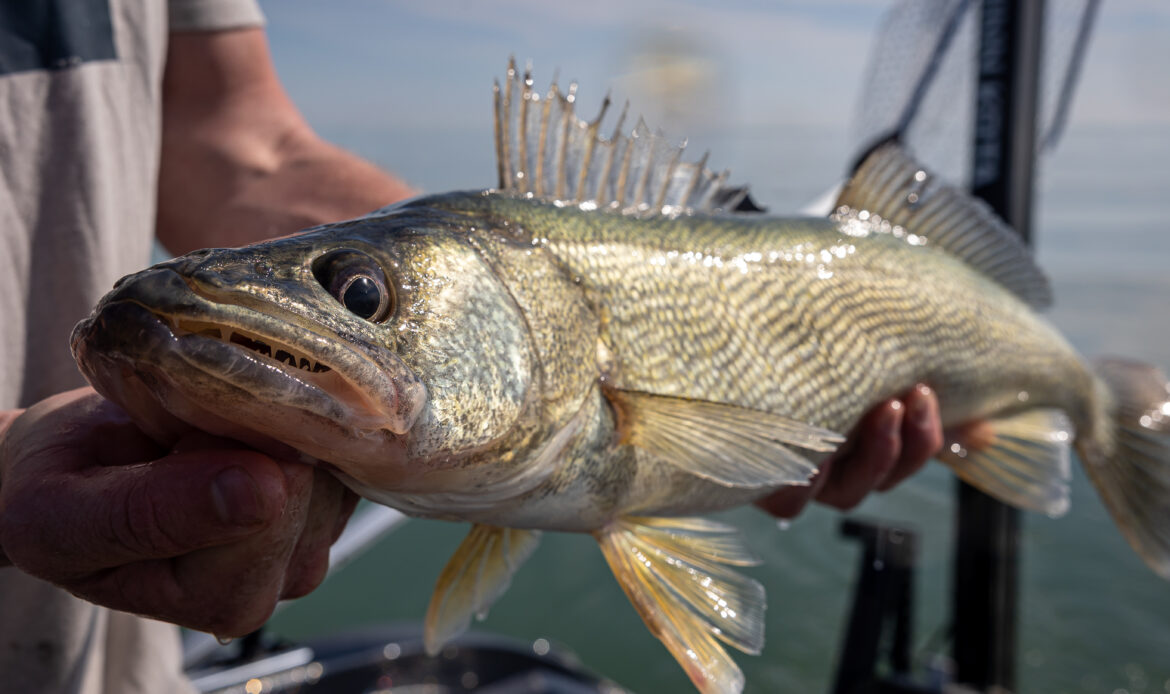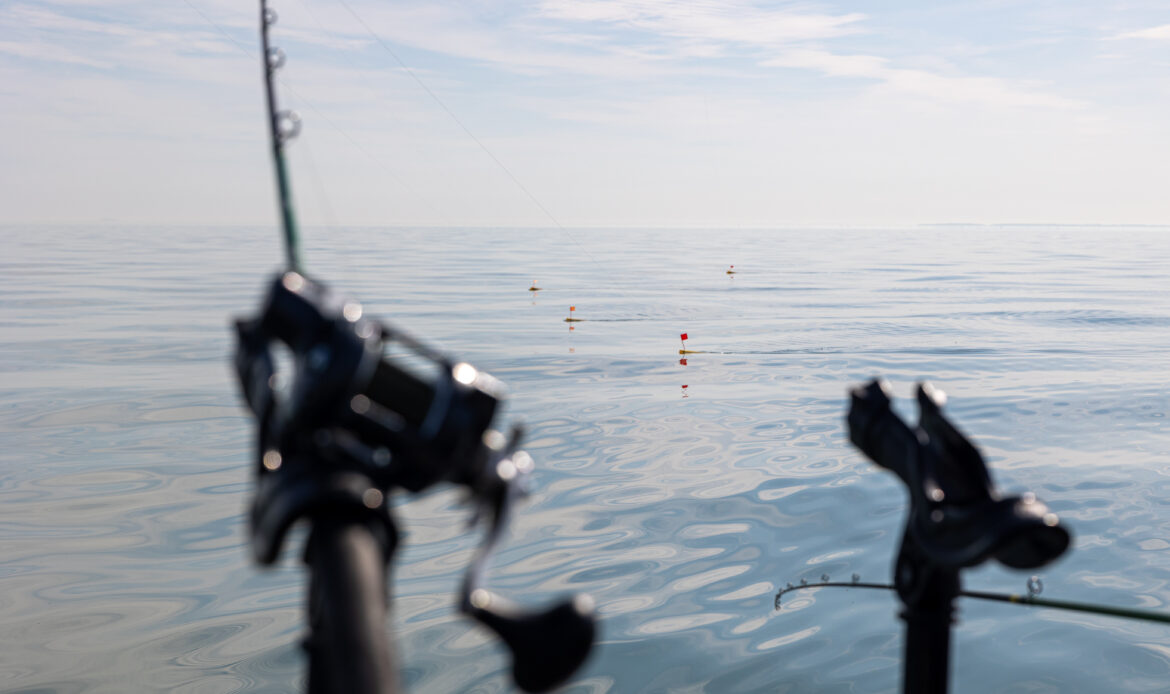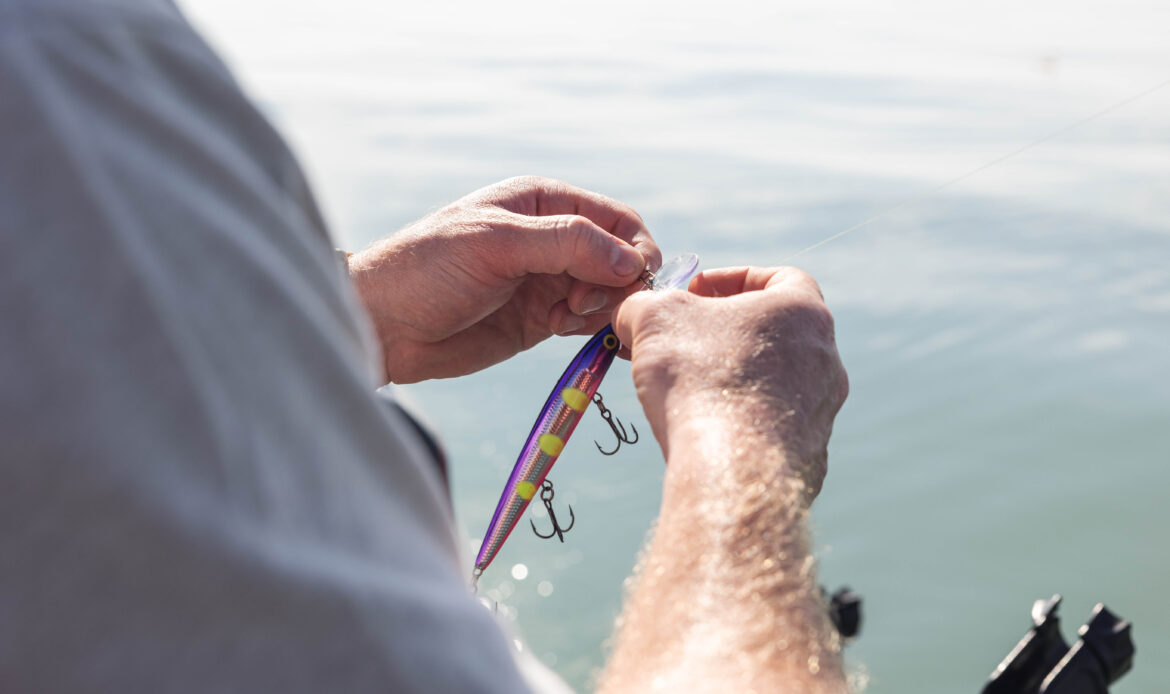Learn how to use different levels of water clarity to locate and catch more walleye on Lake Erie in Ohio.
The North American walleye, Sander vitreus, earned both its Latin and English names with those large, reflective eyes. Their ghost-like irises are uniquely suited for vision in low light and turbid water, so much so that walleye prefer to hunt in the murk. That is why water clarity and walleye go hand in hand.
This feature of their ecology becomes particularly salient in the spring when walleyes head in near shore to spawn, anglers head out to find them, and rivers taut with snowmelt disgorge their chalky contents into large waterbodies like Lake Erie.
Capt. Ross Robertson is a long-time Erie guide, based out of Toledo and Marblehead, Ohio. In a more than 200 miles long lake, he uses water clarity—or lack thereof—to help him decide where to fish and how.
Low Visibility Suits Baitfish and Walleye Alike
Baitfish need to hide. Walleye need to hunt. Low visibility suits both needs.
“If the water’s too clean, it’s generally colder and there’s no cover for the baitfish,” Ross explained during an early-April run out from Marblehead.

However, Walleye can’t see in complete chocolate milk, so a happy medium must be met before Ross puts out gear. Two to four feet of visibility is his ideal range. “We don’t want it super clean and we don’t want it super dirty. You want what I call ‘chalky’—where you can’t see anything on your prop, but you can see your cavitation plate and maybe just make out the prop.”
On large lakes like Erie, it helps to take a broad view when selecting launch points and fishing grounds based on water clarity.
“I start with a satellite image,” Ross said on a recent Erie excursion. “I eliminate the super clean water and the super dirty water by just looking at it.”
He reviews up-to-date photography from low orbit on NOAA’s MODIS imagery website the day or morning before a trip in order to visualize the plumes of dirtier water emerging from river mouths or wave-smashed beaches. This can change day-to-day as clouds of silt drift eastward on Erie’s currents. However, Ross is quick to caution that what you see on the surface may not reflect the turbidity down where the fish swim. The suspended sediment that makes the water murky will eventually sink. Until it does, warmer, dirtier water discharged from a tributary will ride above clearer, colder lake water below. Sometimes the opposite is true.
“I carry a small Aqua-Vu camera,” Ross said. “I’ll drop that thing down and I realize that water is layered, not just in the area but also in depth. And a lot of times, 20 feet down it’s way cleaner than it is above or vice versa. A lot of people just think what they see is what it is. Well, that’s great but none of us are fishing a bait 2 feet down.”

Once he’s located that “chalky” water—not too cloudy, not too clear—he winnows his efforts further using sonar: “Then I want to start [searching] by running the boat at 30 miles an hour in that in-between stuff [watching for fish on the electronics]. You have to remember; we’ve got thousands upon thousands of square miles of water.”
Use The Water Temperature to Find Fish
Water clarity can also be an indicator of temperature.
“Generally in the spring we’re looking for that right water temperature and it’s going be usually two, three degrees warmer,” Ross said.
In the famously frigid Great Lakes, a few degrees higher temperatures can attract early-season baitfish, which then attract predatory fish. The walleye spawn is also temperature dependent, typically occurring in the mid-to-high 40s, so warming waters get the schools moving early in the spring. Before and after that event, both walleyes and their quarry seek out parts of the lake with slightly warmer water. Find that slightly higher temperature and you might find more active ‘eyes, Ross says.
How Water Clarity Affects the Baits You Choose to Fish
You should match your fishing tactics to the water clarity as well, according to Ross. He prefers to troll crankbaits off planer boards in the early season, experimenting constantly with speed and color until an effective pattern begins to emerge.

“You’re going to want to use louder rattles in dirtier water. You’re going to want a more subtle presentation in cleaner water,” Ross said. “A lot of times in the cleaner water we’re going to use more natural colors. We use stuff that’s more finesse or smaller. And sometimes we’re also going to cause a reaction strike by trying to fish faster so we don’t give them as long to look at it.”
In murky water, gaudy and reflective colors will be visible from further away. Ross said that commercial offerings of clown-paint chartreuse, bubblegum pink, ocean blue, and Prince purple are finally beginning to catch up to the hardcore walleye angler tradition of hand-painting plugs.
“So many guys were custom painting them with neon fluorescence, just really vivid colors. All that can make a difference,” he said. “I don’t get too crazy about specific things; it’s more of a generalized pattern, whether it’s super neon, white, transparent, or chrome. Those are the categories.”
Finally, water clarity informs Ross’ trolling pace and approach as well.
“The big thing is speed and controlling the surge,” he concluded. “You don’t want those baits doing anything too erratic generally when we’re in that finesse, cold water period.”
At these times he prefers neutrally-buoyant “suspending” crankbaits, like Rapala’s Husky Jerk. They hang seductively instead of floating or sinking out of the zone, tempting walleye to take.

“A lot of times we’ll turn the boat on one side so all of the baits stall—kind of like how a bass fisherman would fish a jerk bait,” Ross concluded. “Under tough conditions, they’re letting it sit for seconds, and we’re kind of doing the same thing. We’re just using the boat. Then we turn back the other way and those baits are going to speed up and sometimes that’ll cause a strike. And then the lures on the other side of the boat are going to slow down. Really slow S-patterns will give you different actions simultaneously and a different speed range so you can figure out what those fish want.”



